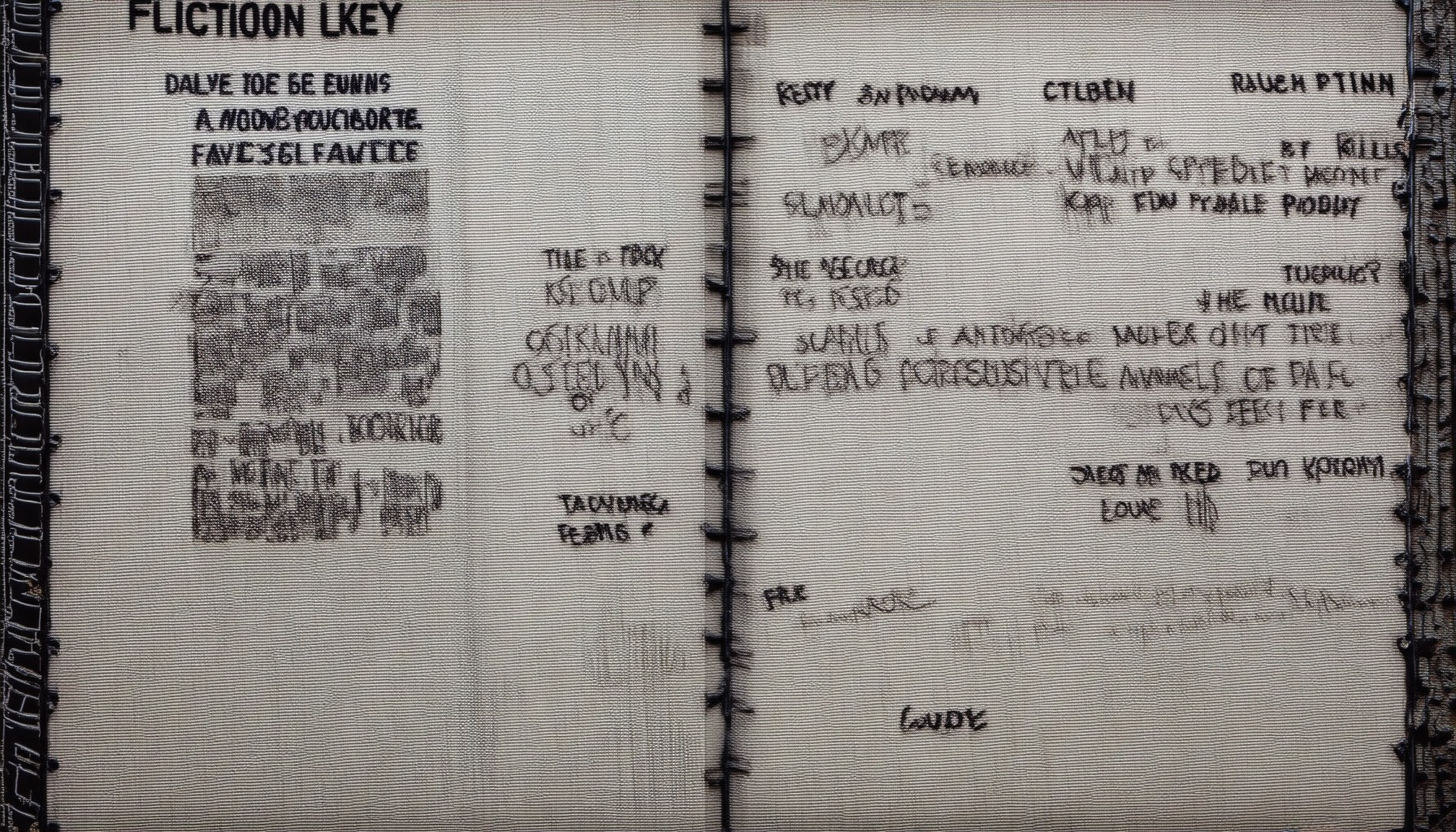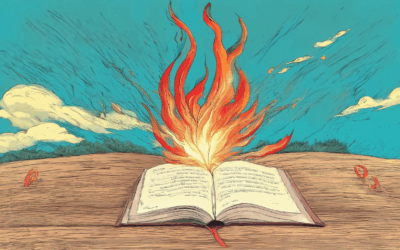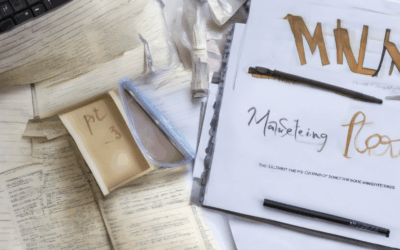Storytelling remains one of the most enduring art forms, serving as a cornerstone of human culture and imagination. At its core, every compelling narrative hinges on its structure, a carefully crafted framework that guides readers through a world of characters, conflicts, and catharsis. Whether it’s the intricate layers of a classic novel, the tight-knit plots of a short story, or the brevity of flash fiction, understanding the underlying components of a narrative fiction structure is crucial for both creators and enthusiasts alike. This article delves into the key elements that define a fiction structure, exploring how they shape stories from traditional tales to modern masterpieces. By examining the unique characteristics of pulp fiction, we will uncover how its distinctive structure has influenced storytelling across genres and continue to captivate audiences worldwide.
Key Takeaways
– Understanding the core elements of a narrative structure is vital for creating engaging stories.
– Pulp fiction thrives on a clear setup that grounds readers in the story’s world and introduces key characters.
– The inciting incident drives the plot forward, introducing conflict and propelling the protagonist into action.
– Rising action builds tension and develops relationships, laying the groundwork for the climax.
– Climax transforms the story, resolving central conflicts and delivering pivotal moments.
– Resolution provides closure, showcasing character growth and the outcomes of the protagonist’s journey.
– Protagonist development is central to a compelling narrative, ensuring relatability and emotional investment.
– Antagonists create tension, shaping the story’s direction and challenging the protagonist.
– Setting influences the story’s mood and pacing, whether it’s a gritty urban environment or a futuristic sci-fi world.
– Themes and symbolism enrich the narrative, offering deeper meaning and emotional resonance.
– Character arcs and motifs guide the story’s progression, enhancing character depth and coherence.
– Stakes elevate the narrative, increasing emotional investment and driving the plot forward.
– Tone shapes the reader’s experience, whether the story is dark, humorous, or thought-provoking.
By masterming these elements, writers can craft stories that captivate audiences and deliver meaningful experiences. Explore James Whitfield Thomson’s literary platform for more insights into storytelling excellence.

Key Components of a Narrative Fiction Structure
A well-crafted narrative fiction structure is essential for creating engaging and memorable stories. Below are the primary components that form the foundation of a successful fictional narrative:
1. The Three-Act Structure
The most widely recognized framework for storytelling, the three-act structure, provides a clear roadmap for plot progression. It consists of:
- Setup: Introduce the protagonist, establish the world, and present the central conflict or problem.
- Rising Action: Develop the story through a series of events that escalate tension and reveal character traits.
- Climax: Reach the peak of conflict, often involving a turning point that changes the direction of the story.
- Resolution: Conclude the story, resolving the main conflicts and providing closure.
2. Character Development
Character development is the heart of any narrative. A well-defined protagonist undergoes a journey from an ordinary individual to someone who grows through their experiences:
- Protagonist: The central character whose journey drives the plot.
- Antagonist: The force or entity opposing the protagonist, creating conflict.
- Supporting Characters: Friends, mentors, or adversaries who play crucial roles in the story.
- Character Arc: The transformation or growth experienced by the protagonist throughout the narrative.
3. Subplots
Subplots add layers to the main plot, enriching the narrative with additional conflicts and character interactions:
- Primary Subplot: The main storyline intertwined with the protagonist’s journey.
- Secondary Subplot: A complementary story that intersects with the primary plot.
- Subsubplots: Smaller narratives that contribute to the overall theme or conflict.
4. Themes and Motifs
Themes provide the underlying meaning of the story, while motifs act as recurring elements that reinforce these themes:
- Themes: Central ideas or messages explored throughout the narrative (e.g., redemption, love, power).
- Motifs: Recurring symbols, objects, or actions that symbolize the theme (e.g., a particular object representing transformation).
5. Stakes and Conflict
High stakes elevate the narrative, creating urgency and driving character decisions:
- Internal Conflict: Mental or emotional struggles faced by characters.
- External Conflict: Challenges or obstacles external to the characters (e.g., natural disasters, societal pressures).
- Conflict Resolution: How the protagonist resolves these challenges, shaping their growth.
6. Setting and World-Building
The setting serves as the backdrop against which the story unfolds, shaping the characters’ experiences:
- Physical Setting: The locations where the story takes place, contributing to the atmosphere.
- Cultural Setting: The social, historical, or cultural context influencing the narrative.
- World-Building: Creating a believable universe that feels lived-in and consistent.
7. Pacing and Timing
Effective pacing keeps readers engaged, balancing action with reflection and foreshadowing:
- Pacing: The speed at which the story unfolds, maintaining interest and suspense.
- Timing: The strategic placement of events to build anticipation and reveal information at the right moments.
By masterfully combining these elements, authors can craft compelling and immersive narratives that resonate with readers. At James Whitfield Thomson, we believe every great story begins with a solid structure and evolves through careful attention to detail.
Key Components of a Narrative Fiction Structure
A well-crafted narrative fiction structure is essential for creating engaging and memorable stories. Below are the primary components that form the foundation of a successful fictional narrative:
1. The Three-Act Structure
The most widely recognized framework for storytelling, the three-act structure, provides a clear roadmap for plot progression. It consists of:
- Setup: Introduce the protagonist, establish the world, and present the central conflict or problem.
- Rising Action: Develop the story through a series of events that escalate tension and reveal character traits.
- Climax: Reach the peak of conflict, often involving a turning point that changes the direction of the story.
- Resolution: Conclude the story, resolving the main conflicts and providing closure.
2. Character Development
Character development is the heart of any narrative. A well-defined protagonist undergoes a journey from an ordinary individual to someone who grows through their experiences:
- Protagonist: The central character whose journey drives the plot.
- Antagonist: The force or entity opposing the protagonist, creating conflict.
- Supporting Characters: Friends, mentors, or adversaries who play crucial roles in the story.
- Character Arc: The transformation or growth experienced by the protagonist throughout the narrative.
3. Subplots
Subplots add layers to the main plot, enriching the narrative with additional conflicts and character interactions:
- Primary Subplot: The main storyline intertwined with the protagonist’s journey.
- Secondary Subplot: A complementary story that intersects with the primary plot.
- Subsubplots: Smaller narratives that contribute to the overall theme or conflict.
4. Themes and Motifs
Themes provide the underlying meaning of the story, while motifs act as recurring elements that reinforce these themes:
- Themes: Central ideas or messages explored throughout the narrative (e.g., redemption, love, power).
- Motifs: Recurring symbols, objects, or actions that symbolize the theme (e.g., a particular object representing transformation).
5. Stakes and Conflict
High stakes elevate the narrative, creating urgency and driving character decisions:
- Internal Conflict: Mental or emotional struggles faced by characters.
- External Conflict: Challenges or obstacles external to the characters (e.g., natural disasters, societal pressures).
- Conflict Resolution: How the protagonist resolves these challenges, shaping their growth.
6. Setting and World-Building
The setting serves as the backdrop against which the story unfolds, shaping the characters’ experiences:
- Physical Setting: The locations where the story takes place, contributing to the atmosphere.
- Cultural Setting: The social, historical, or cultural context influencing the narrative.
- World-Building: Creating a believable universe that feels lived-in and consistent.
7. Pacing and Timing
Effective pacing keeps readers engaged, balancing action with reflection and foreshadowing:
- Pacing: The speed at which the story unfolds, maintaining interest and suspense.
- Timing: The strategic placement of events to build anticipation and reveal information at the right moments.
By masterfully combining these elements, authors can craft compelling and immersive narratives that resonate with readers. At James Whitfield Thomson, we believe every great story begins with a solid structure and evolves through careful attention to detail.

The Essential Components of a Fiction Structure
A well-structured fiction is built upon several key components that work together to create an engaging and cohesive narrative. Here’s a breakdown of the essential elements:
- Plot : The sequence of events that drive the story forward, providing the backbone of the narrative.
- Characters : Central figures, including the protagonist, supporting characters, antagonists, and other significant individuals who influence the plot.
- Setting : The time and place where the story unfolds, which shapes the tone and atmosphere.
- Conflict : The central struggle or problem that the protagonist faces, leading to tension and progression.
- Stakes : The consequences of the protagonist’s actions, adding depth and urgency to the story.
- Theme : The underlying message or moral of the story, often explored through the characters and plot.
- World-Building : Creating a believable setting, particularly in genres like fantasy or sci-fi, to immerse the reader.
- Point of View : The perspective from which the story is told, influencing the narrative style and detail revelation.
- Structure : The organization of the story into chapters, scenes, or acts, ensuring a smooth flow.
- Hook : The initial element that captures the reader’s attention, often within the first few pages.
- Climax : The peak of the conflict where the main issue reaches its most intense state.
- Resolution : The conclusion that wraps up the story, showing the aftermath of the events.
- Character Development : Growth or transformation experienced by the protagonist and other characters throughout the narrative.
- Journey : The protagonist’s emotional and developmental arc from the start to the finish of the story.
These components collectively create a rich and layered structure, ensuring that the story is not only entertaining but also meaningful and impactful.

What Are the Key Components of a Fiction Structure?
The foundation of any compelling fiction lies in its structure, which guides readers through the narrative journey. Here’s a breakdown of the essential elements that make up a fiction structure:
- Setup : This introduces the protagonist, setting, and initial situation. It establishes the world and provides background information that sets the stage for the story.
- Inciting Incident : This is the catalyst that propels the story forward. It introduces conflict or a significant change in the protagonist’s life, driving the plot.
- Rising Action : As the story progresses, tension builds through a series of events leading toward the climax. This phase develops character relationships and subplots.
- Climax : The peak of the story where the central conflict reaches its most intense point. This is often the turning point that resolves the main issue.
- Resolution : The conclusion wraps up the story, providing closure for the characters and the plot. It may confirm the protagonist’s growth or the outcome of the conflict.
These elements work together to create a balanced and engaging narrative, ensuring that the story feels complete and satisfying to the reader. By mastering these components, writers can craft stories that resonate deeply with audiences.
For more insights into crafting effective fiction, explore James Whitfield Thomson’s literary platform , where you’ll find detailed guides, tips, and reflections on the art of storytelling.
What Are the Key Components of a Fiction Structure?
The foundation of any compelling fiction lies in its structure, which guides readers through the narrative journey. Here’s a breakdown of the essential elements that make up a fiction structure:
- Setup : This introduces the protagonist, setting, and initial situation. It establishes the world and provides background information that sets the stage for the story.
- Inciting Incident : This is the catalyst that propels the story forward. It introduces conflict or a significant change in the protagonist’s life, driving the plot.
- Rising Action : As the story progresses, tension builds through a series of events leading toward the climax. This phase develops character relationships and subplots.
- Climax : The peak of the story where the central conflict reaches its most intense point. This is often the turning point that resolves the main issue.
- Resolution : The conclusion wraps up the story, providing closure for the characters and the plot. It may confirm the protagonist’s growth or the outcome of the conflict.
These elements work together to create a balanced and engaging narrative, ensuring that the story feels complete and satisfying to the reader. By mastering these components, writers can craft stories that resonate deeply with audiences.
For more insights into crafting effective fiction, explore James Whitfield Thomson’s literary platform , where you’ll find detailed guides, tips, and reflections on the art of storytelling.

The Main Parts of a Fiction Structure
A well-structured fiction story is built upon several key components that work together to create an engaging and compelling narrative. Here’s a breakdown of the essential elements:
- Protagonist : The central character around whom the story revolves. This individual typically undergoes a transformation or faces challenges that drive the plot forward. The protagonist is often relatable to the audience, fostering empathy and engagement.
- Antagonist : The force or entity that opposes the protagonist. This could be another character, an external force, or an abstract concept. The antagonist creates conflict and propels the story forward, providing tension and drama.
- Setting : The physical and/or temporal environment in which the story unfolds. The setting can influence the mood, atmosphere, and pacing of the narrative. Examples include urban environments, historical periods, or fantastical worlds.
- Plot Structure : The sequence of events that make up the story. A classic structure includes:
- Inciting Incident : The event that disrupts the protagonist’s ordinary life, initiating the journey.
- Rising Action : The gradual buildup of tension and complexity as the protagonist prepares for the climax.
- Climax : The peak point of conflict and emotion where the major confrontation occurs.
- Resolution : The conclusion that wraps up the story, leaving the protagonist and the audience with a sense of closure.
- Theme : The underlying idea or message of the story, often explored through the characters and their experiences. Themes can be explicit or implied, providing depth and meaning to the narrative.
- Symbolism : Objects, actions, or concepts that carry a broader meaning or represent larger ideas. Symbols enhance the narrative by evoking emotions and reinforcing themes.
- Character Arc : The development of the protagonist and other significant characters over the course of the story. Growth, transformation, and change are key aspects of a well-crafted arc.
- Motif : Recurring elements, whether they be visual, auditory, or thematic, that unify the story and contribute to its overall feel.
- Stakes : The consequences of the protagonist’s actions and the risks involved in achieving their goals. High stakes increase the emotional investment of the reader.
- Tone : The overall mood or attitude of the story, which can vary from serious and contemplative to lighthearted and humorous, influencing the reader’s experience.
By understanding and effectively utilizing these elements, authors can craft stories that resonate deeply with readers, offering both entertainment and insight.





0 Comments